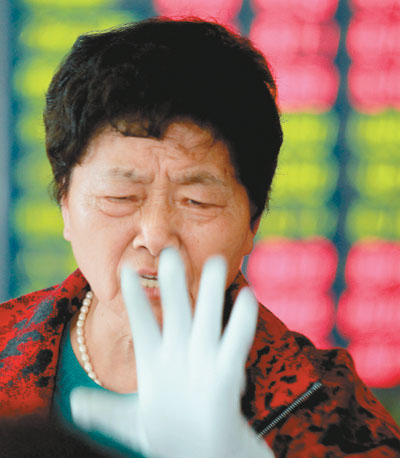|

CHINA halted stock trading Thursday, its second daylong trading suspension this week, after prices plunged in the latest spasm of investor panic on its volatile markets.
A similar price plunge Monday triggered a sell-off on Wall Street and other global markets.
On Thursday, trading was suspended for the rest of the day after a market index, the CSI 300, nose-dived 7 percent half an hour after markets opened, triggering a “circuit breaker” that took effect Jan. 1.
At 9:42 a.m., trading was suspended for 15 minutes after the CSI 300 dropped by over 5 percent. The index dived a further 2 percent in just two minutes after reopening at 9:57 a.m. and trading was ceased.
The benchmark Shanghai Composite Index fell 7.3 percent to 3,115.89. The Shenzhen Composite Index for China’s smaller second exchange slumped 8.3 percent to 1,955.88.
Investors are growing increasingly worried about China, after two reports this week indicated that growth may be slowing more sharply than expected. The yuan has fallen to its weakest level since March 2011. Investors are also worried that a flood of new stocks will flood the market.
Asian and European markets were deep in the red Thursday and U.S. Dow and S&P 500 futures were down by around 2.5 percent in early trading.
The FTSE100 was down 3 percent and Germany’s Dax has dropped 3.75 percent in early trading. Asian markets ended the session lower. Hong Kong closed 3 percent down, while Japan’s Nikkei was 3.2 percent lower.
Crude futures slumped as much as 5.5 percent to just above US$32 per barrel, the lowest in more than 10 years.
Investors and analysts slammed the new circuit breaker, saying it was making things worse.
Investors said the circuit breaker changes the way investors trade in a way that fires up selling pressure rather than cooling it. They say the trigger levels for the breaker were too low and too close together to work effectively.(SD-Agencies)
(Read more on P5: New rules limit big shareholders’ selling)
|

